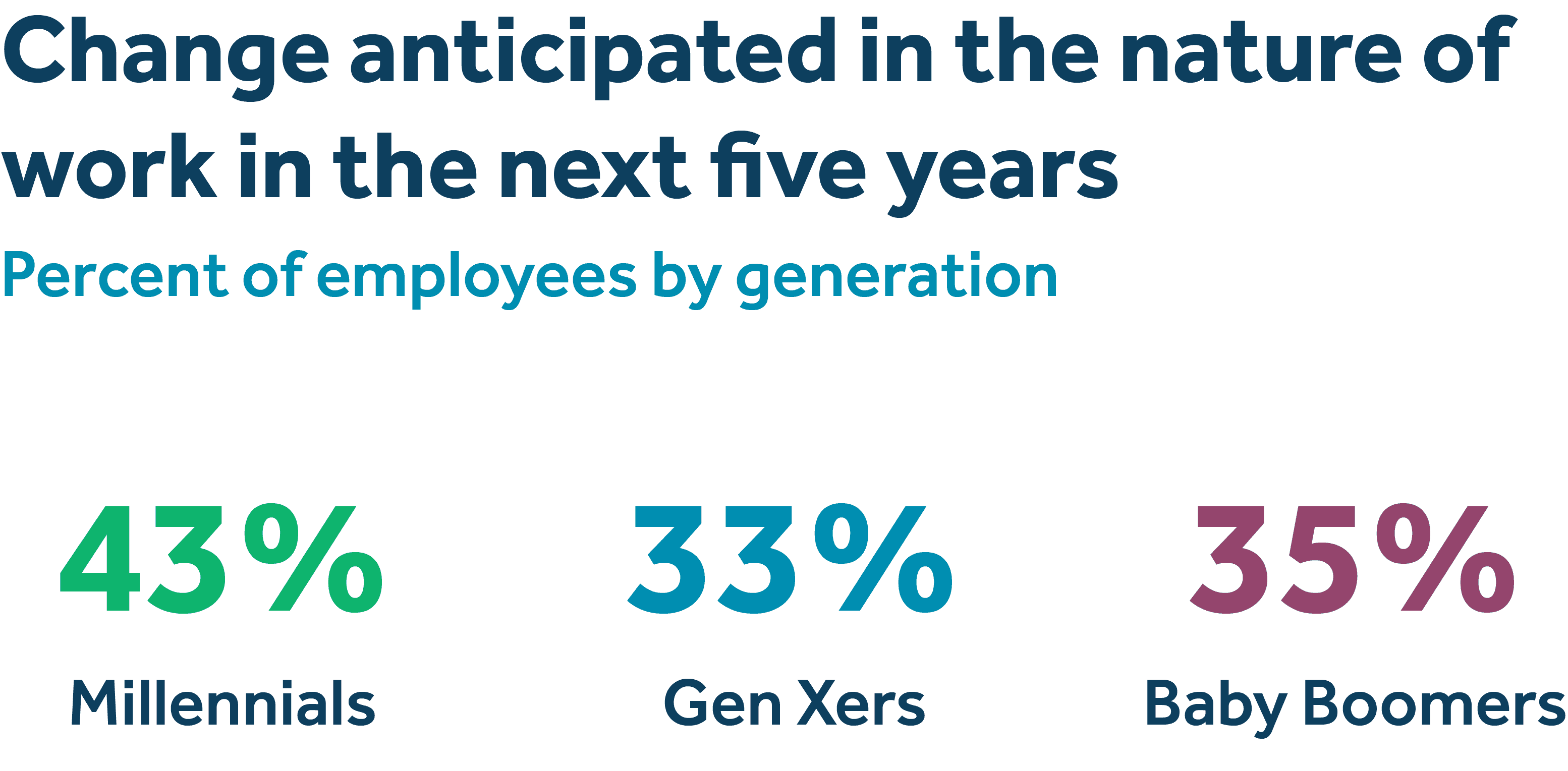The Next Generation of Work
This archived material is for informational purposes only; the information provided was accurate at the time of publication but may no longer be current.
Ready or not, the way we work is changing. Our new 5th Annual Workplace Benefits Study from Guardian shows that today’s jobs are changing at a rapid pace. Streamlined work processes, enabled by technology, have the potential to increase efficiency and generate greater productivity. New technologies like artificial intelligence and automation are driving change in the workplace.
How are companies responding to mitigate the potential risk of automation on their workforce?
What does all this mean for future talent acquisition and workforce strategies?
Why are working Americans putting greater emphasis on job perks and flexibility at work?
Employers Begin Preparing for the Future of Work
As businesses adapt and evolve, people will embrace agile work environments and new roles and job titles will emerge. In just a few years, many employers anticipate that work will be much more flexible, collaborative, diverse and automated than it is today.
Approximately two-thirds of businesses and workers anticipate at least some change to the nature of jobs and/or skill requirements in the next five years. However, our research indicates that a majority of working Americans aren’t prepared for this new world of work.
Expectations Vary by Industry and Generations
Not surprisingly, employers in the technology sector are most likely to anticipate change, with firms in the professional services, healthcare and retail industries forming a second tier.
Adapting to workplace automation may come more easily for Millennials but they, too, will need help in acquiring or strengthening skills for the future of work. Among working Americans, the extent of expected change differs somewhat by generation and is highest among younger workers; millennials expect the most change in the next five years.

Steps Employers Must Take Today to Prepare for the Workplace of Tomorrow
As the U.S. workplace evolves and jobs are transformed by technology and automation, organizations are beginning to re-evaluate and update their workforce strategies. Boardrooms and executive teams across the country are grappling with the ramifications of increased automation by anticipating and planning for changes to the nature of work.
Here are four important steps employers can take to build the optimal workforce for a more automated workplace.
Make Talent Acquisition and Learning a Top Priority
Establish an Agile Workforce Strategy
Prepare for Demographic Shifts
Evolve the Organization’s Culture
Read the full research brief to learn how employers and employees are addressing the workforce of tomorrow.
